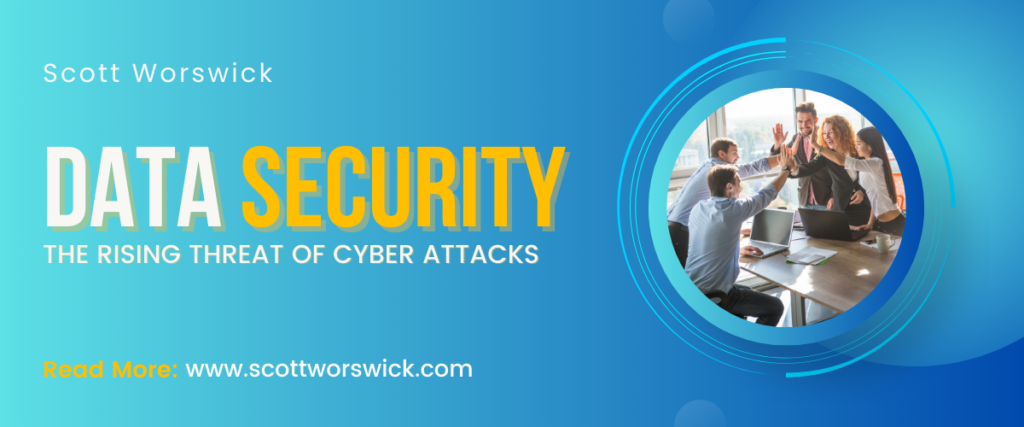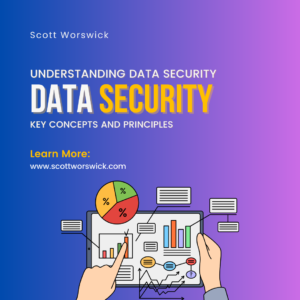In an era where digital transformation is at its peak, the significance of data security has never been more pronounced. As our lives become increasingly intertwined with technology, personal information is being collected, stored, and processed at unprecedented rates. From social media interactions to online banking transactions, vast amounts of personal data are transmitted over the internet daily. This surge in digital activity, while convenient, also brings heightened risks. Cybercriminals are constantly devising new ways to exploit vulnerabilities, making the protection of personal information a critical concern for individuals, businesses, and governments alike. Understanding and implementing robust data security measures is essential to safeguard this sensitive information and maintain trust in the digital ecosystem.
The ramifications of inadequate data security are far-reaching and can be devastating. High-profile data breaches have demonstrated how easily personal information can fall into the wrong hands, leading to identity theft, financial loss, and severe reputational damage. For individuals, the consequences of a data breach can include unauthorized access to bank accounts, fraudulent credit card charges, and even personal safety risks if sensitive information is exposed. For businesses, the stakes are equally high. A single breach can result in significant financial losses, legal liabilities, and a loss of consumer trust that can take years to rebuild. Therefore, the implementation of stringent data security protocols is not just a technical necessity but a fundamental aspect of modern digital life.
Moreover, the regulatory landscape surrounding data security is becoming increasingly stringent. Laws such as the General Data Protection Regulation (GDPR) in Europe and the California Consumer Privacy Act (CCPA) in the United States underscore the legal imperatives of protecting personal data. These regulations impose rigorous standards on how personal information is collected, processed, and stored, with hefty penalties for non-compliance. For businesses, adhering to these regulations is not only a legal obligation but also a competitive advantage, as consumers are more likely to trust companies that prioritize data security. As the digital landscape continues to evolve, the importance of maintaining robust data security measures to protect personal information will only grow, underscoring the need for continuous vigilance and adaptation.
Table of Contents
1. Understanding Data Security
Understanding data security is fundamental to appreciating its importance in protecting personal information. At its core, data security encompasses the practices, technologies, and processes used to safeguard digital information from unauthorized access, corruption, or theft. It involves a multi-layered approach that includes encryption, authentication, access control, and regular security audits. Each layer is designed to provide a robust defense against various threats, ensuring that personal and sensitive information remains confidential and intact. As cyber threats evolve, so too must the strategies and tools used to counteract them, making data security a dynamic and ever-evolving field.
Encryption is one of the cornerstones of data security. By converting data into a coded format that can only be read by someone who has the correct decryption key, encryption protects information from unauthorized access, even if the data is intercepted during transmission. There are two primary types of encryption: symmetric and asymmetric. Symmetric encryption uses the same key for both encryption and decryption, while asymmetric encryption uses a pair of keys – one public and one private. Both methods play critical roles in securing communications and stored data, ensuring that sensitive information such as financial records, personal details, and confidential communications are kept safe from prying eyes.
Authentication and access control are equally crucial in the realm of data security. Authentication verifies the identity of a user or system before granting access to resources. This can involve various methods, such as passwords, biometrics, and multi-factor authentication (MFA). Access control, on the other hand, determines which users have permission to access specific data and what actions they can perform with it. By implementing strict access control measures, organizations can minimize the risk of internal threats and unauthorized access to sensitive information. Together, authentication and access control form a critical barrier against both external and internal security breaches.
Regular security audits and updates are essential components of a comprehensive data security strategy. Security audits involve systematically reviewing an organization’s security policies and practices to identify vulnerabilities and ensure compliance with regulatory requirements. These audits help in assessing the effectiveness of existing security measures and identifying areas that need improvement. Additionally, as cyber threats are continually evolving, regular updates to security protocols and systems are necessary to address new vulnerabilities and threats. By staying proactive and vigilant, organizations can better protect personal information and maintain the integrity of their data security frameworks.
Understanding the multifaceted nature of data security highlights its crucial role in protecting personal information. From encryption and authentication to access control and security audits, each aspect contributes to a robust defense against cyber threats. As the digital landscape continues to evolve, so too must the strategies and technologies used to safeguard sensitive information. By prioritizing data security, individuals and organizations can ensure that personal information remains protected, fostering trust and security in an increasingly interconnected world.
2. The Rising Threat of Cyber Attacks

In today’s digital age, the rising threat of cyber attacks poses a significant challenge to the importance of data security in protecting personal information. Cybercriminals continuously devise sophisticated tactics to exploit vulnerabilities in digital systems and networks, making it imperative for individuals and organizations to remain vigilant. From large-scale data breaches at multinational corporations to targeted phishing attacks on individual users, the breadth and depth of cyber threats are unprecedented. These attacks not only compromise the confidentiality of personal information but also undermine trust in digital platforms and services.
One of the primary concerns with the rising threat of cyber attacks is the potential for identity theft and financial fraud. Personal information such as names, addresses, social security numbers, and financial details are highly coveted by cybercriminals, who can use this data to impersonate individuals or commit fraudulent activities. Moreover, the proliferation of online transactions and digital payments has created new avenues for cybercriminals to exploit, leading to an increase in financial losses and reputational damage. As cyber attacks become more sophisticated and widespread, the need for robust data security measures to protect personal information has never been greater.
Furthermore, the impact of cyber attacks extends beyond just financial losses; it can also have profound implications for individuals’ privacy and well-being. Breaches of personal information can lead to feelings of violation and insecurity, eroding trust in digital platforms and service providers. Moreover, the potential for identity theft and fraud can have long-lasting consequences for individuals, affecting their credit scores, financial stability, and overall quality of life. Therefore, investing in robust data security measures and staying informed about the latest cyber threats is essential for safeguarding personal information and preserving trust in the digital ecosystem.
3. Personal Information: A Valuable Commodity
Personal information has emerged as an immensely valuable commodity. This data includes a wide range of details, from names and addresses to social security numbers, credit card information, and even biometric data like fingerprints and facial recognition markers. For cybercriminals, this information is a goldmine, providing numerous opportunities for financial gain through identity theft, fraud, and black market sales. The sheer volume and diversity of personal data generated and stored by individuals and organizations alike underline the pressing need for robust data security measures to protect this sensitive information.
One of the primary reasons personal information is so valuable is its potential for exploitation in identity theft and financial fraud. Cybercriminals can use stolen data to open new credit accounts, take out loans, and make unauthorized purchases in the victim’s name. The consequences for individuals can be devastating, leading to significant financial losses, damaged credit scores, and a lengthy, stressful process to restore their identity and finances. In many cases, victims may not even realize their information has been compromised until substantial damage has already been done, highlighting the importance of proactive data security to prevent such breaches.
Beyond financial exploitation, personal information is also a key target for cybercriminals because of its value on the dark web. Stolen data can be sold to the highest bidder, who may use it for various malicious purposes, from orchestrating further cyber attacks to creating fake identities for illegal activities. The demand for personal data on these illicit markets drives a continuous cycle of cybercrime, where information stolen from one breach can be used to facilitate countless other illegal activities. This underscores the critical need for individuals and organizations to implement and maintain rigorous data security practices to protect personal information from being leaked or stolen.
Additionally, the misuse of personal information extends beyond financial crimes. Sensitive data can be used for doxxing—publicly revealing private information to intimidate or harass individuals—or to craft highly targeted phishing attacks that are harder to detect and more likely to succeed. The psychological and emotional toll of such invasions of privacy can be profound, leading to fear, anxiety, and a loss of trust in digital platforms. This further emphasizes the importance of comprehensive data security strategies to safeguard personal information and maintain user confidence in digital services.
4. Regulatory Compliance and Legal Obligations
Regulatory compliance and legal obligations are critical components of data security in today’s digital landscape. Governments worldwide have implemented stringent regulations to protect personal information, reflecting the growing importance of data security in safeguarding individual privacy. Laws such as the General Data Protection Regulation (GDPR) in the European Union and the California Consumer Privacy Act (CCPA) in the United States set rigorous standards for how personal data should be collected, processed, stored, and shared. These regulations are designed to give individuals greater control over their personal information while ensuring that organizations handle data responsibly and transparently.
Adhering to these regulations is not merely a legal formality but a vital aspect of maintaining trust and credibility. Non-compliance can result in severe penalties, including hefty fines and legal actions, which can significantly impact an organization’s financial stability and reputation. For instance, under the GDPR, fines can reach up to 4% of a company’s annual global turnover or €20 million, whichever is higher. These substantial penalties underscore the critical need for robust data security measures and thorough compliance strategies. Organizations must regularly review and update their data handling practices to align with evolving legal requirements and to protect against potential breaches and non-compliance risks.
Beyond avoiding penalties, regulatory compliance also offers a competitive advantage in the marketplace. Consumers are increasingly aware of their data privacy rights and prefer to engage with businesses that prioritize protecting personal information. By demonstrating a commitment to data security and regulatory compliance, organizations can build and maintain trust with their customers, fostering long-term relationships and brand loyalty. Moreover, a strong compliance framework can enhance operational efficiency by streamlining data management processes and reducing the risk of breaches. Ultimately, embracing regulatory compliance and legal obligations is not only a necessity but also a strategic opportunity to enhance an organization’s reputation and operational resilience in the digital age.
5. The Role of Encryption in Data Security
Encryption plays a pivotal role in data security, serving as one of the most effective tools for protecting sensitive information from unauthorized access. At its core, encryption involves converting data into a coded format that can only be deciphered by someone who possesses the appropriate decryption key. This ensures that even if data is intercepted during transmission or accessed without authorization, it remains unreadable and useless to cybercriminals. Encryption is particularly crucial for safeguarding personal information, financial data, and confidential communications, making it a fundamental component of any robust data security strategy.
There are two primary types of encryption: symmetric and asymmetric. Symmetric encryption uses the same key for both encryption and decryption, which makes it faster and more efficient for encrypting large volumes of data. However, the challenge lies in securely sharing the key between parties. Asymmetric encryption, on the other hand, uses a pair of keys—a public key for encryption and a private key for decryption. This method eliminates the need to share the private key, significantly enhancing security. Both types of encryption are essential in different scenarios; for instance, symmetric encryption is often used for securing stored data, while asymmetric encryption is commonly employed for secure communications and transactions.
The role of encryption extends beyond just protecting data from theft, it also ensures the integrity and authenticity of the information. By encrypting data, organizations can verify that the data has not been tampered with during transmission. This is especially important for sensitive operations such as online banking, e-commerce transactions, and confidential communications. Implementing strong encryption protocols helps organizations comply with regulatory requirements, build trust with customers, and mitigate the risks associated with data breaches. As cyber threats continue to evolve, the adoption of advanced encryption techniques remains a critical element of data security, ensuring that personal information remains protected in an increasingly digital world.
6. The Human Factor in Data Security
The human factor plays a critical role in data security, often acting as both the weakest link and the first line of defense. Despite advancements in technology, human error remains one of the leading causes of data breaches. Simple mistakes, such as using weak passwords, falling for phishing scams, or inadvertently sharing sensitive information, can have significant consequences. Training and awareness are essential to mitigate these risks. By educating employees and users about the importance of data security, organizations can significantly reduce the likelihood of breaches caused by human error.
One of the most common vulnerabilities is the use of weak or easily guessable passwords. Despite widespread awareness, many individuals still opt for passwords that are simple to remember but equally simple to crack. Encouraging the use of strong, unique passwords, and implementing multi-factor authentication (MFA) can enhance security. MFA requires users to provide two or more verification factors, which significantly reduces the risk of unauthorized access, even if one factor is compromised. Regularly updating passwords and avoiding the reuse of passwords across multiple accounts are also critical practices that enhance data security.
Phishing attacks are another prevalent threat that exploits human behavior. These attacks involve tricking individuals into providing sensitive information, such as login credentials or financial details, by masquerading as a trustworthy entity. Phishing can be highly sophisticated, with emails and websites designed to look legitimate. Continuous training programs can help employees recognize and avoid phishing attempts. Simulated phishing exercises can be particularly effective in reinforcing these lessons, providing real-world experience in identifying and responding to suspicious activities.
Beyond technical training, fostering a culture of security awareness is crucial. This involves creating an environment where data security is prioritized and ingrained in the daily activities of all employees. Clear policies and procedures should be established and communicated, ensuring that everyone understands their role in protecting personal information. Encouraging employees to report suspicious activities without fear of reprisal can also help in early detection and response to potential threats. By addressing the human factor in data security comprehensively, organizations can create a robust defense against the myriad of cyber threats that target human vulnerabilities.
7. Building a Culture of Data Security
Building a culture of data security within an organization is crucial for protecting personal information and maintaining overall cybersecurity. This culture begins with a clear commitment from top management, emphasizing the importance of data security across all levels of the organization. Leadership should actively promote and prioritize security practices, ensuring that policies are not just in place but are also effectively communicated and enforced. By setting the tone from the top, organizations can foster an environment where data security is ingrained in the daily operations and mindset of every employee.
Employee training and continuous education are foundational elements in building a robust data security culture. Regular training sessions should be conducted to keep employees informed about the latest security threats, best practices, and the organization’s specific security protocols. This education should be practical and engaging, using real-world scenarios to illustrate the potential risks and appropriate responses. Additionally, incorporating data security into onboarding processes for new hires ensures that awareness starts from day one. Ongoing training and refresher courses help maintain a high level of vigilance and adaptability to new threats.
Creating a culture of data security also involves making it a shared responsibility across the organization. Every employee, regardless of their role, should understand that they have a part to play in protecting sensitive information. Encouraging proactive behavior, such as reporting suspicious activities and adhering to security protocols, reinforces this shared responsibility. Recognition and rewards for good security practices can further motivate employees to stay vigilant. Regular audits and feedback loops can help identify areas for improvement and ensure that security measures are effective and up-to-date. By embedding data security into the organizational culture, companies can better safeguard personal information and enhance their overall resilience against cyber threats.
8. The Future of Data Security
The future of data security is set to be shaped by rapid technological advancements and an increasingly complex cyber threat landscape. As digital transformation continues to accelerate, the volume and sensitivity of data being processed, stored, and transmitted will grow exponentially. Emerging technologies such as artificial intelligence (AI), machine learning, and blockchain will play pivotal roles in enhancing data security measures. AI and machine learning can help in real-time threat detection, identifying patterns and anomalies that signify potential breaches. These technologies enable proactive defense mechanisms, allowing organizations to respond swiftly and effectively to cyber threats, thereby significantly enhancing their data security posture.
Blockchain technology, known for its decentralized and immutable nature, offers promising applications for data security, particularly in ensuring the integrity and transparency of transactions. By creating an unalterable ledger of data exchanges, blockchain can prevent unauthorized alterations and provide a robust framework for verifying the authenticity of data. This technology can be particularly beneficial in sectors such as finance, healthcare, and supply chain management, where data integrity is paramount. As blockchain continues to evolve, its integration with existing security protocols could offer a formidable defense against data breaches and unauthorized access.
However, with these technological advancements come new challenges. The increasing sophistication of cyber attacks, including AI-driven threats and quantum computing capabilities, will require continuous innovation and adaptation in data security strategies. Quantum computing, for instance, has the potential to break traditional encryption methods, necessitating the development of quantum-resistant cryptographic algorithms. Organizations will need to invest in research and development to stay ahead of these emerging threats. Additionally, fostering a culture of security awareness and ensuring regulatory compliance will remain essential components of a comprehensive data security strategy. As the digital landscape evolves, the future of data security will depend on a combination of advanced technologies, proactive risk management, and a vigilant, educated workforce.
Conclusion
The importance of data security in protecting personal information cannot be overstated. In today’s interconnected world, where digital interactions are ubiquitous, safeguarding sensitive data has become a critical imperative. From financial transactions to healthcare records and social media profiles, personal information is constantly at risk of being exploited by cybercriminals. Therefore, implementing robust data security measures is essential to mitigate these risks and ensure the confidentiality, integrity, and availability of personal data.
Furthermore, data security is not just a technical concern but also a legal and ethical obligation. Governments around the world have enacted stringent regulations to protect personal information and hold organizations accountable for data breaches. Compliance with regulations such as the GDPR and CCPA is not only a legal requirement but also a demonstration of an organization’s commitment to protecting user privacy. By adhering to these regulations and implementing comprehensive data security protocols, organizations can build trust with their customers and stakeholders, safeguarding their reputation and credibility in the marketplace.
Looking ahead, the future of data security will be shaped by ongoing technological advancements and evolving cyber threats. As technologies such as AI, blockchain, and quantum computing continue to mature, organizations must stay vigilant and adaptable in their approach to data security. Investing in research, education, and innovation will be crucial in staying ahead of emerging threats and maintaining robust defenses against cyber attacks. Ultimately, by prioritizing data security and fostering a culture of vigilance and responsibility, individuals and organizations can navigate the complexities of the digital landscape while safeguarding the personal information entrusted to them.






Pingback: Best Practices for Data Encryption and Its Role in Data Security -